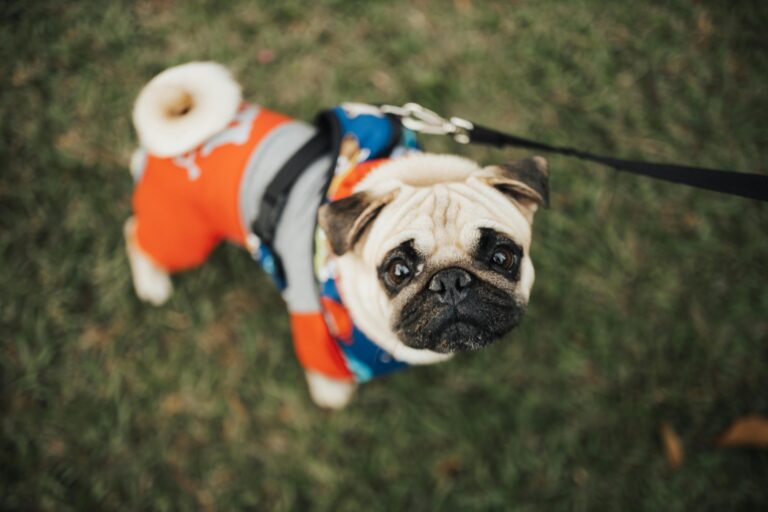Leash reactivity is one of the most common issues I hear about from dog owners in St. Louis. Many dogs are calm and friendly off-leash but bark, lunge, or whine the moment they are clipped to a leash. This can make walks stressful and frustrating, leaving owners wondering what went wrong.
The truth is leash reactivity is not about aggression in most cases. It is about frustration, excitement, and poor communication. Let’s break down what leash reactivity really is, why it happens, and what you can do to fix it.
What Leash Reactivity Looks Like
Leash reactivity can take many forms:
- Barking or growling at other dogs or people
- Lunging toward distractions
- Whining, pacing, or spinning on the leash
- Pulling hard to reach other dogs
- Freezing and staring intensely
While these behaviors may look aggressive, they are often caused by lack of impulse control, not true hostility.
Common Causes of Leash Reactivity
There is no single cause. Most leash reactivity develops from a combination of factors.
- Frustration: Dogs that want to greet others but cannot often explode in excitement.
- Barrier frustration: The leash prevents natural interaction, increasing anxiety.
- Lack of training: Without structured leash manners, dogs learn pulling and lunging work.
- Inconsistent handling: Owners sometimes allow pulling, other times correct it. This creates confusion.
- Fear or insecurity: Some dogs bark or lunge because they feel vulnerable on a leash.
For dogs that show restless or anxious behaviors at home, such as pacing or whining, reactivity often surfaces more easily outside. Our post on why dogs pace, whine, or cannot settle can help you understand the underlying stress that feeds into leash issues.
Myths About Leash Reactivity
There are several myths that often confuse owners:
- Myth: Reactive dogs are aggressive. Most are not. They are simply overstimulated or frustrated.
- Myth: They need more freedom to fix it. More off-leash time does not solve leash-specific problems.
- Myth: Pulling them past distractions works. This only masks the issue instead of teaching calm behavior.
- Myth: They will outgrow it. Without training, leash reactivity usually worsens over time.
Fixing Leash Reactivity
Reactivity can be addressed with structure, patience, and consistency. Here are the key strategies:
- Strengthen Basic Obedience
Commands like Heel, Place, and Leave it are essential tools for redirecting attention. Our Basic Obedience Program provides the structure necessary for dogs to stay focused during walks. - Practice Engagement
Reward eye contact and focus on you instead of the environment. This builds a habit of checking in rather than reacting. - Use Distance to Your Advantage
Start far enough from distractions where your dog can stay calm. Gradually close the distance as your dog gains confidence. - Avoid Tension on the Leash
Constant pulling increases reactivity. Keep slack when possible and correct smoothly when needed. - Stay Calm Yourself
Dogs feed off your energy. If you tense up when another dog approaches, your dog will too.
Structured Training vs. Dog Parks
Some owners think dog parks are the solution to leash reactivity, but uncontrolled play often makes it worse. Structured play, on the other hand, reinforces obedience and calm behavior. Our post on serious games that transform skill development explains how purposeful activities build control and focus, even around distractions.
When to Get Professional Help
If your dog is lunging, barking, or showing intense reactivity that you cannot manage, professional training can make all the difference. Reactivity is often rooted in timing and consistency, and having an expert guide you accelerates progress while keeping you and your dog safe.
The American Kennel Club explains reactivity vs. aggression and stresses that with the right approach, most reactive dogs can learn to walk calmly.
Quick Checklist for Leash Reactivity
- Identify whether your dog is frustrated, fearful, or overstimulated
- Focus on obedience to redirect attention
- Keep calm and consistent with leash handling
- Practice at safe distances before closing gaps
- Avoid unstructured, chaotic environments
- Seek professional guidance if needed
Building Better Walks
Leash reactivity is a solvable problem. With the right balance of obedience, consistency, and structure, your dog can learn to stay calm and respectful on leash.
Our Basic Obedience Program is designed to give you the tools you need to overcome leash reactivity and enjoy stress-free walks. If you are ready to start building better walks, contact us today through our contact page and let us help.


